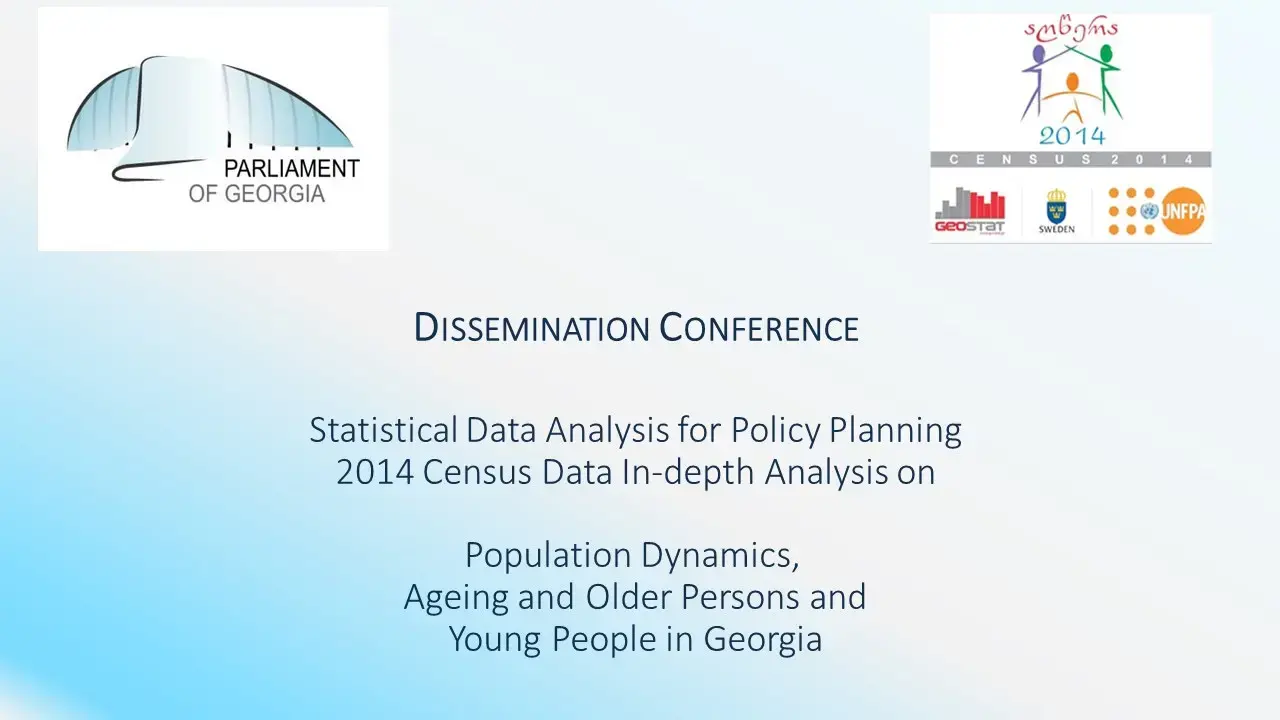Eastern Europe is often cited as facing a demographic crisis. Is this accurate?
Florence Bauer: Eastern Europe shares some trends with the rest of Europe, like low birth rates and ageing populations. But these trends are accelerated by outmigration in the region. The combination of low birth rate and negative migration balance – many more people leave than move into the countries of the region – has led to significant population declines and has increased the pace of population ageing. This causes a range of challenges, for example for the future of social protection systems. But there is no reason for anxiety: there is a lot governments can do to mitigate negative effects and make full use of the opportunities that also come with demographic change.
Should the focus be on raising fertility rates?
FB: Much of the public discourse around demographic change in the region is centred around low birth rates and how to get women to have more children. It tends to put blame and pressure on women and often ignores the underlying factors that hinder family formation and drive outmigration, such as poor education, unaffordable housing, unstable jobs, political instability and corruption. This is why the focus on fertility rates can be counterproductive and potentially harmful: it risks distracting from real solutions to demographic challenges and reversing decades of progress on gender equality, reproductive rights and women’s empowerment, with potentially far-reaching negative consequences for countries’ stability and development.
Does this mean there is no point in addressing low fertility?
FB: Not at all. We see in virtually all countries of the region that people say they want more children than they ultimately have. This gap – between people’s fertility intentions and their realized fertility – is the space governments have to make a difference. They can expand family policies, including childcare, in a gender-responsive way, address discriminatory gender norms, remove the many penalties that come with motherhood, change workplace cultures, strengthen economies of care and redistribute unpaid care responsibilities. These investments may not guarantee higher birth rates, but they benefit individuals and society in numerous ways and should be pursued regardless of their impact on fertility. Ultimately, the decision to have children rests with individuals, and governments should focus on supporting their choices rather than dictating them.
How does women's empowerment factor into demographic resilience?
FB: Investing in gender equality is crucial for addressing demographic change. Women still pay a high price for having children. They often are the primary or even sole caregivers. As a result, many mothers drop out of education or employment. When they manage to remain in the labour force, they tend to earn less, get overlooked for promotions, end up in lower-paid jobs and face stigma and discrimination at the workplace. Removing these “motherhood penalties” and distributing care roles more equally between women and men would go a long way in creating societies where having children is not penalized, but valued as a contribution to the sustainable future of society. It would enable more women to have the number of children they want and join the workforce, which boosts GDP and helps mitigate the effects of ageing and shrinking populations.
Are financial incentives effective in increasing birth rates?
FB: The evidence we have suggests that financial incentives such as tax or cash benefits alone are largely ineffective. They might cause short-term fluctuations in fertility rates but typically don’t lead to sustained increases in the total number of children women have. Financial incentives can also have costly consequences, as they tend to drive women out of the workforce and perpetuate poverty. This does not mean that governments should not provide financial support to families. But it should be motivated by supporting people to have the number of children they want, and it should be done in a way that avoids negative social consequences.
Does access to family planning bring down birth rates even more?
FB: That is a common misconception. There is no direct correlation between contraceptive use and fertility levels in Europe. In Georgia, for example, an increase in fertility rates has gone hand in hand with an increase in the use of modern contraceptives. France Family planning empowers women to make informed choices about their bodies and lives. They can plan and time their pregnancy and realize their fertility intentions in accordance with their educational, career and other life aspirations. This is good for women and for societies as a whole, especially if they struggle with demographic change.
What about population ageing? Is it a threat?
FB: While ageing populations pose challenges like pressure on pension systems, they do not automatically spell doom. With proper planning and support for healthy ageing, older people can continue to contribute to society and the economy. We must work on building societies for all ages, without age-based stigma and discrimination. And we must pay special attention to the situation of older women who often struggle with loneliness and poverty caused by the cumulative effects of discrimination and exclusion over their lifetime.
What role does human capital play in addressing demographic change?
FB: Human capital is a term we use to describe the health, knowledge and skills that can be found in a population. Societies with strong human capital tend to be more productive and innovative and find it easier to adapt to demographic change. For example, when older people are healthy and well-educated, they can continue to be active in the economy and public life, contributing their skills and experiences, and they are less likely to rely on social support transfers. Similarly, if young women are empowered to have control over their bodies and fertility, they are more likely to complete their education, find a good job and become financially independent. This is why investing in human capital is key for addressing demographic change.
How can countries strengthen their resilience to demographic change?
FB: Ultimately, the best way to deal with demographic change is to create conditions that allow people to have confidence in their future and that of their families. If young people have access to quality education and health care, if they are in stable employment and get support for their families, they are less likely to feel the need to emigrate and more likely to decide to have children. Population numbers are important. But even more important than quantity are individuals’ capacities, skills and talents, as well as their health and productivity. This is why countries that nurture and utilize their population’s human capital and attract talent from abroad are able to thrive and remain competitive even when they face low birth rates and population ageing.
Florence Bauer is the Regional Director for Eastern Europe and Central Asia of UNFPA, the United Nations Population Fund. UNFPA supports countries in the region in strengthening their resilience to demographic change.





